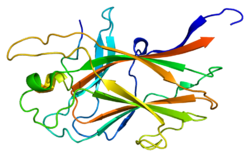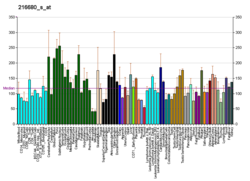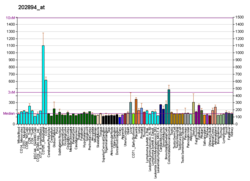EPH receptor B4
Protein-coding gene in the species Homo sapiens From Wikipedia, the free encyclopedia
Ephrin type-B receptor 4 is a protein that in humans is encoded by the EPHB4 gene.[5][6]
Ephrin receptors and their ligands, the ephrins, mediate numerous developmental processes, particularly in the nervous system. Based on their structures and sequence relationships, ephrins are divided into the ephrin-A (EFNA) class, which are anchored to the membrane by a glycosylphosphatidylinositol linkage, and the ephrin-B (EFNB) class, which are transmembrane proteins. The Eph family of receptors are divided into 2 groups based on the similarity of their extracellular domain sequences and their affinities for binding ephrin-A and ephrin-B ligands. Ephrin receptors make up the largest subgroup of the receptor tyrosine kinase (RTK) family. The protein encoded by this gene binds to ephrin-B2 and plays an essential role in vascular development.[6][7]
References
Further reading
Wikiwand - on
Seamless Wikipedia browsing. On steroids.







